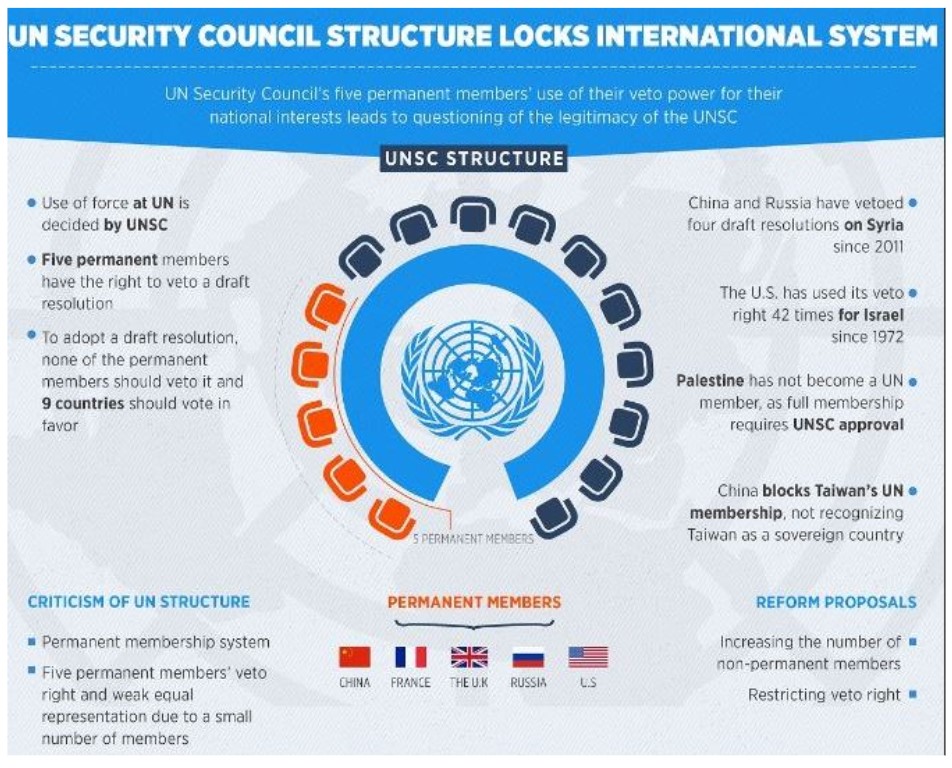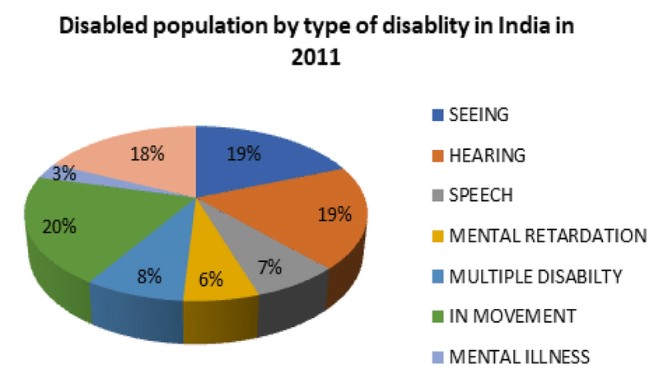CONTENTS
- The Question of Palestine’s UN Membership
- General Election 2024 and Inclusion of Deaf and Hard of Hearing (DHH) Citizens
The Question of Palestine’s UN Membership
Context:
Israel’s conflict with Gaza has sparked numerous ethical, political, and diplomatic debates. A notable diplomatic issue drawing significant attention is Palestine’s renewed bid for United Nations (UN) membership. Ironically, this bid is stalled at the UN Security Council (UNSC), primarily due to the geopolitical considerations of the United States. The U.S. contends that membership should follow, not precede, a negotiated resolution to the long-standing conflict.
Relevance:
GS2- Important International Institutions, agencies and fora – their Structure, Mandate.
Mains Question:
A notable diplomatic issue drawing significant attention today is Palestine’s renewed bid for United Nations (UN) membership. In this context, discuss the norms and procedure governing the grant of UN Membership to a country. What has been India’s stand in Palestine’s bid for UN membership? (15 Marks, 250 Words).
Palestine Seeking UN Membership:
- This is not the first instance of Palestine seeking UN membership; a similar attempt in 2011 was also blocked by a U.S. veto in the UNSC. Currently, Palestine holds non-member observer status.
- This April, after the UNSC failed to reach a consensus on Palestine’s application due to a solitary U.S. veto, the UN General Assembly (UNGA) intervened to express support for the Palestinian bid.
- On May 10, the UNGA overwhelmingly passed a resolution affirming Palestine’s eligibility for full UN membership and urged the UNSC to consider Palestine’s request favorably.
Norms and Politics:
Standard Procedure:
- The UN mandates that prospective members be “peace-loving” states and capable and willing, in its judgment, to fulfill the obligations of the Charter.
- Although these criteria are broadly interpreted, the procedural threshold for admission, dictated by the political dynamics of the five permanent members (P5) of the UNSC, remains decisive and challenging.
- Membership applications must be recommended without explicit opposition from any P5 member before the UNGA can accept the request.
- In essence, a negative vote by any P5 member, exercising their veto power, prevents the UNSC’s recommendation, whereas no such veto exists in the UNGA, which requires a two-thirds majority for decisions.

Resolving Deadlock:
- During the Cold War, numerous admission requests stalled in the UNSC, prompting the UNGA to seek the World Court’s opinion on whether it could admit states without the UNSC’s recommendation.
- The Court ruled in 1948 that a UNSC recommendation is necessary for the UNGA to exercise its admission power.
- This ruling led to the breaking of the deadlock in the UNSC, resulting in the recommendation of all pending applications and a steady increase in membership from the 51 founding members to 193 today.
- UN membership is widely regarded as a sought-after confirmation of sovereign statehood for countries that have gained independence from foreign rule or occupation.
- Mongolia’s case is comparable to Palestine’s current situation. When Mongolia’s application was stuck in the UNSC, the UNGA intervened with a resolution similar to the one in Palestine’s case, suggesting Mongolia deserved a favorable UNSC recommendation. Mongolia eventually gained membership in 1961.
India’s Approach:
- India was among the 142 member countries that supported the UNGA resolution in May 2024, which favored Palestine’s bid for membership.
- India believes that granting membership status to Palestine could improve the chances of achieving a two-state solution to the longstanding Israel-Palestine conflict.
- India’s stance on this issue aligns with the Nehruvian principle that UN membership should be available to all state applicants without discrimination.
- Historically, India has never opposed any country’s membership. For instance, India supported Pakistan’s admission to the UN in 1947 and endorsed the representation of the People’s Republic of China in 1971, despite having prolonged border conflicts with China.
- While the U.S. and the former USSR/Russian Federation have blocked many membership applications, China has also played a role in such rejections.
- After joining the UNSC in 1971, the People’s Republic of China vetoed Bangladesh’s application for membership despite its recent liberation.
Way Forward:
- Palestine cannot achieve full membership in the UN without passing through the UNSC, and the U.S. veto remains a significant obstacle.
- China and Russia are concerned that bypassing the UNSC could set a precedent for the admission of territories like Taiwan or Kosovo.
- In a less likely scenario, the U.S. might abstain from using its veto, potentially as a sign of disapproval towards Israel for not heeding its advice to cease attacks on Gazan civilians, thereby allowing the UNGA to approve Palestine’s membership. This could lead to Israel protesting and potentially quitting the UN.
- If the UNSC stalemate persists, the UNGA might consider excluding Israel from its deliberations. Such a move, while short of suspending or expelling Israel—actions that require UNSC recommendation—has historical precedents.
Conclusion:
South Africa during apartheid and the Serb Republic of Yugoslavia during ethnic cleansing were both barred from participating in the UNGA. Besides these theoretical options, increasing Palestine’s participatory privileges—short of granting voting power in the UNGA and eligibility for election to major UN organs—would signal a rejection of might over right in this era.
General Election 2024 and Inclusion of Deaf and Hard of Hearing (DHH) Citizens
Context:
As the 2024 general election in India approaches its conclusion, a notable omission during the Election Commission of India’s announcement in March was the lack of sign language interpreters in the televised and social media broadcast. This omission highlights the everyday exclusion faced by Deaf and Hard of Hearing (DHH) citizens in India.
Relevance:
GS2-
- Issues Related to Disability
- Government Policies & Interventions
Mains Question:
Equity in education, health care, and rights in India cannot succeed unless the ableist barriers that exclude Deaf and Hard of Hearing citizens are removed. Analyse. (10 Marks, 150 Words).
Shortcomings in the Efforts Taken:
- India’s efforts towards equity in education, healthcare, and rights must address and dismantle the ableist barriers that exclude DHH individuals.
- For instance, the National Programme for Prevention and Control of Deafness aims to prevent and treat hearing impairment and provide medical rehabilitation, but it fails to address the quality of life for DHH people.
- While it covers theoretical aspects of screening and hearing aid prescriptions, it neglects Indian Sign Language (ISL), a crucial communication tool for the deaf community. Although the ISL Research and Training Centre was established in 2015, ISL is still not officially recognized.
- Despite the National Education Policy 2020 recommending standardized ISL teaching in schools, its implementation remains limited, even in schools for the deaf.
Sign Language versus Oralism:
- The Indian education system predominantly emphasizes “oralism,” encouraging deaf individuals to use their voices and lip-read rather than using sign language.
- Most educators in deaf schools are not trained in ISL, focusing instead on “rehabilitation” and expecting deaf individuals to adapt to their surroundings, rather than removing social barriers.
- This approach has been criticized for fostering an isolating social structure for deaf people in an inherently ableist society.
- In contrast, integrating sign language supports cognitive development in deaf children and prevents linguistic deprivation.
- Over 70 countries legally recognize national sign languages, ensuring that education and essential information are accessible to deaf citizens.
- The exclusion of the deaf in India underscores the pervasive ableism within the society.
Headcount in India:

- The 2011 Census reported five million hearing-impaired people in India, but the National Association of the Deaf estimates this number to be 18 million, and the World Health Organization suggests nearly 63 million Indians have significant hearing impairment.
- Despite these numbers, DHH individuals rarely experience inclusion in everyday life. Only 5% of deaf children attend school, often taking much longer to graduate due to an oralist curriculum.
- Although there are government initiatives to employ the deaf, many still struggle to secure jobs. In 2020, protests erupted over recruitment policies favoring those with less than 40% hearing impairment.
- Numerous petitions to recognize Indian Sign Language (ISL) have been rejected, with authorities claiming the Rights of Persons with Disabilities Act (RPDA) 2016 is sufficient to preserve and advance the language. This persistent rejection highlights ongoing marginalization.
Challenges in Everyday Life:
- For deaf people, everyday tasks become significant challenges due to a lack of accessibility. Public transport announcements, TV shows, public structure directions, and helpline calls are often inaccessible.
- Simple daily activities, taken for granted by others, become battles won through years of litigation and advocacy.
- Although Doordarshan introduced a weekly news segment in ISL in 1987, this precedent has not been adopted by private news channels.
- While films, Indian Premier League 2024 cricket matches, and OTT shows have introduced accessible options, there is still much progress to be made.
Employment and Opportunities:
- Opportunities for the deaf community are typically limited to roles such as housekeeping, waitstaff, and data entry operators.
- The private sector has implemented accessibility and inclusion programs with captioning and interpreter services, but the government sector lags behind.
- Numerous protests by the deaf community at state and national levels have been met with police force or unfulfilled promises. Despite the RPDA, policy changes are ineffective without proper implementation.
Healthcare Access:
- The deaf community also faces significant challenges in accessing healthcare, as most hospitals in India lack interpreters.
- This issue is even more severe for mental healthcare, as there is a shortage of trained language interpreters.
- The Mental Healthcare Act of 2017 promises mental health care for all, but its implementation is poor, with only 250 certified sign language interpreters and no clear data on ISL-trained mental health professionals.
What Needs to Be Done:
- The current situation requires a shift from ableism to accessibility. Official recognition of Indian Sign Language (ISL) is essential, and it should be integrated naturally into schools and colleges for both hearing and DHH students.
- Teaching ISL should be a job opportunity for DHH individuals, enhancing their employment prospects. Additionally, the hearing population should practice ISL in daily interactions to achieve fluency.
- Healthcare systems need updates to ensure easy and accessible communication for the deaf community at all levels. DHH patients benefit from care provided by language-concordant physicians.
- However, current regulations by medical, dental, and nursing commissions present significant barriers to DHH individuals aspiring to enter healthcare professions.
- Increasing inclusivity in the healthcare workforce would make it more diverse and mainstream the need for ISL interpreters.
- Deaf programming should be standard across media channels. While English-language channels often have accessible subtitles, Hindi and other regional language channels lack ISL interpretation or subtitles. Government announcements should include live ISL interpreters, a practice common in several countries.
Conclusion:
With timely interventions, real-time ISL interpretations might be mandated by the Election Commission of India (ECI) in future elections to ensure accessibility and inclusion. Hence, the issues discussed above are not exhaustive. Authorities should listen to and address the needs of the DHH community comprehensively.



